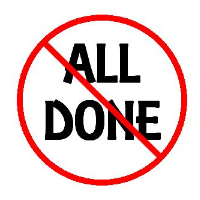Port of Los Angeles Never Finished Landmark Pollution Controls

Community members and activists were optimistic in 2003 when the rapidly-expanding Port of Los Angeles agreed to a broad range of environmental mitigation to settle a lawsuit, and kicked in $50 million to address health and safety issues.
“Today is Day 1 in the greening of the Port of Los Angeles,” Gail Ruderman Feuer, of the Natural Resources Defense Council (NRDC), told the Los Angeles Times back then. The groundbreaking agreement was incorporated into an environmental impact report (EIR) five years later.
Last week, NRDC attorney David Pettit expressed surprise and a marked cynicism upon learning that 11 of the 52 measures agreed upon were not completed, saying he “never thought for a second that they wouldn't happen. My belief is the port has known for years that the mitigation wasn't happening and didn't tell anybody.”
That could be. China Shipping North America, which operates the 130-acre terminal at the center of the controversy, wants the 11 unfulfilled mitigation measures reviewed because the company thinks technology has overtaken some of them, while others just aren’t “feasible.” The company parent is based in Shanghai.
Port Executive Director Gene Seroka told the Times that the agreement had been essentially fulfilled because air-quality measurements had declined overall and the results were “even better than what we attempted to produce.”
But there was no denying the 11 failures to improve “aesthetics, air quality, biology, cultural resources, geology, ground water, noise, public services, and transportation,” because they were mentioned in a September “notice of preparation of a draft environmental impact report” (pdf) prepared by the port.
Ships that were supposed to slow down, shut off their diesel engines and switch to onshore electricity did not always do that. Trucks and yard tractors that should have been switched to alternative fuels sometimes were not.
When Seroka announced on October 7 that “an unfortunate issue of delayed implementation of mitigation measures” had been uncovered by management, he initiated the supplemental EIR process to determine if changes in the agreement were warranted.
The L.A. port and the Port of Long Beach next door generate about 10% of Southern California's smog-forming emissions.
–Ken Broder
To Learn More:
Port of Los Angeles Has Failed to Meet Pollution-Cutting Measures (by Tony Barboza, Los Angeles Times)
LA Reviewing Environmental Impact of China Shipping Terminal (by Bill Mongelluzzo, Journal of Commerce)
Port Responds to Criticisms of Its Pollution Controls (by Jed Kim, KPCC)
Notice of Preparation of a Draft Supplemental Environmental Impact Report (Port of Los Angeles) (pdf)
- Top Stories
- Controversies
- Where is the Money Going?
- California and the Nation
- Appointments and Resignations
- Unusual News
- Latest News
- California Forbids U.S. Immigration Agents from Pretending to be Police
- California Lawmakers Urged to Strip “Self-Dealing” Tax Board of Its Duties
- Big Oil’s Grip on California
- Santa Cruz Police See Homeland Security Betrayal in Use of Gang Roundup as Cover for Immigration Raid
- Oil Companies Face Deadline to Stop Polluting California Groundwater





